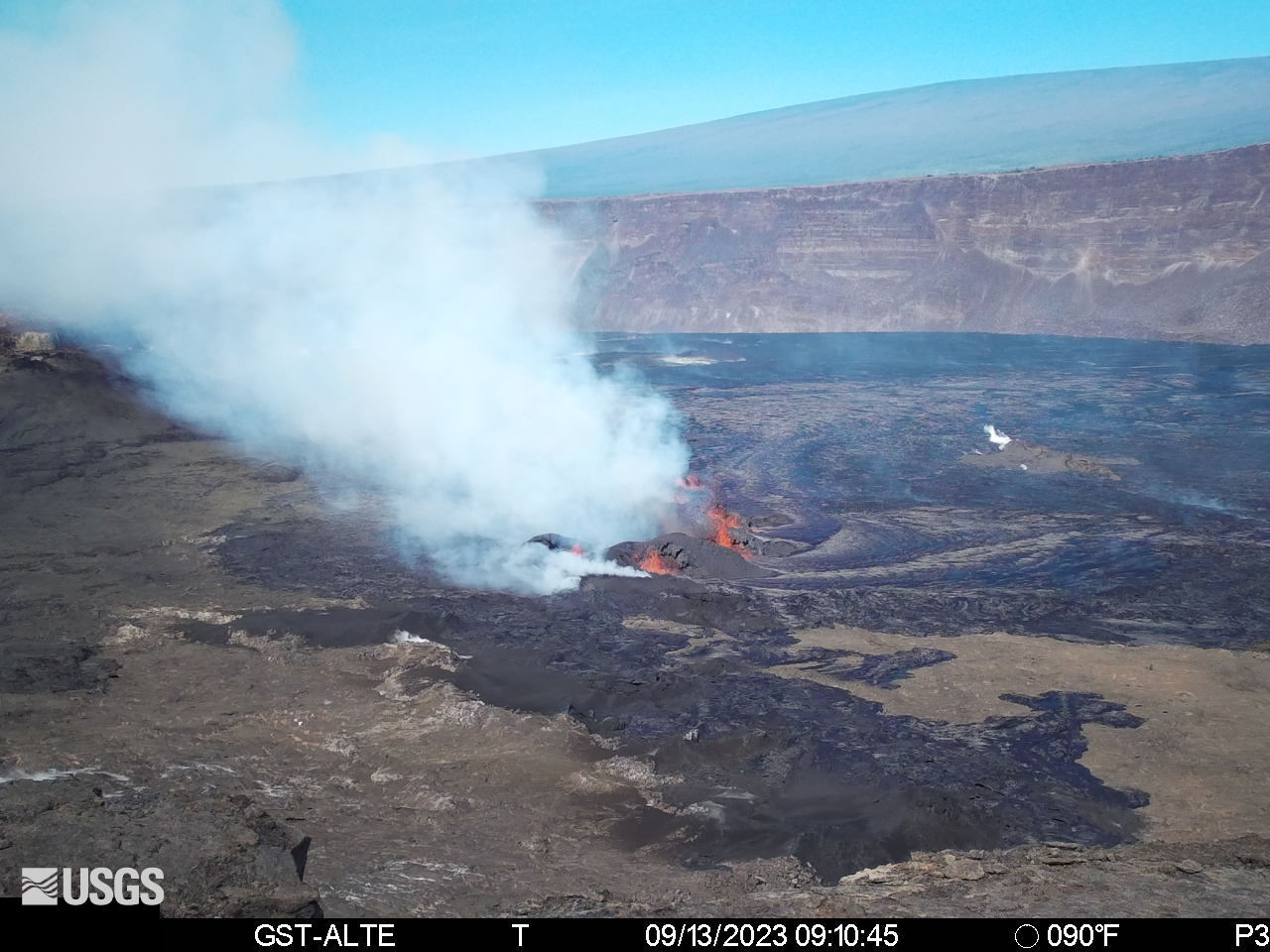(BIVN) – The Kīlauea eruption that began on September 10th continues, with all lava activity confined to the summit caldera within Hawaiʻi Volcanoes National Park. The current Volcano Alert Level remains at WATCH, and no unusual activity has been noted along Kīlauea’s East Rift Zone or Southwest Rift Zone.
From the USGS Hawaiian Volcano Observatory on Wednesday, September 13:
Halemaʻumaʻu Lava Lake Observations: Several vents continue to erupt on the western side of the downdropped block within Kīlauea’s summit caldera and are generating lava flows onto Halema‘uma‘u crater floor. The roughly east-west trending active vents span approximately 0.5 miles (750 m) and had lava fountain heights of up to about 10 meters (32 feet) yesterday. From the erupting vents, pāhoehoe lava flows continue to travel in north and west directions onto Halema‘uma‘u crater floor; however, the area of active lava has retreated towards the vents compared to yesterday. This morning, active lava appears to be flowing only on the north and east parts of Halema‘uma‘u, the eastern boundary of which has been mostly covered by lava flows. The area north of the eruptive vents has become perched and is about 3 meters (15 feet) higher than the surrounding ground surface. Effusion rates appear down from initial eruptive rates, but remain high. The laser rangefinder is aimed at a western portion of Halema‘uma‘u, not near the new eruptive activity, and recorded nearly 6 m (20 feet) of uplift to this locality since the eruption started. This demonstrates that a significant amount of lava has intruded beneath the pre-existing crust within Halema‘uma‘u.
Summit Observations: Summit tilt has remained deflationary over the past 24 hours. Summit seismic activity is dominated by eruptive tremor (a signal associated with fluid movement) with very few volcano tectonic earthquakes. Volcanic gas emissions in the eruption area are elevated; a sulfur dioxide (SO2) emission rate of 30,000 tonnes per day was measured yesterday morning, September 10. This is down significantly from the 190,000 tonnes per day measured just after the onset of the eruption on Sunday, September 10th.
There are still some eruption-related closures inside Hawaiʻi Volcanoes National Park. Officials say Devastation Parking and the section of old Crater Rim Drive west to Keanakākoʻi Crater and the eruption observation area are closed due to hazardous volcanic gases.



by Big Island Video News9:37 am
on at
STORY SUMMARY
HAWAIʻI VOLCANOES NATIONAL PARK - Eruptive activity remains confined to the downdropped block and Halemaʻumaʻu crater within Kīlauea's summit caldera.